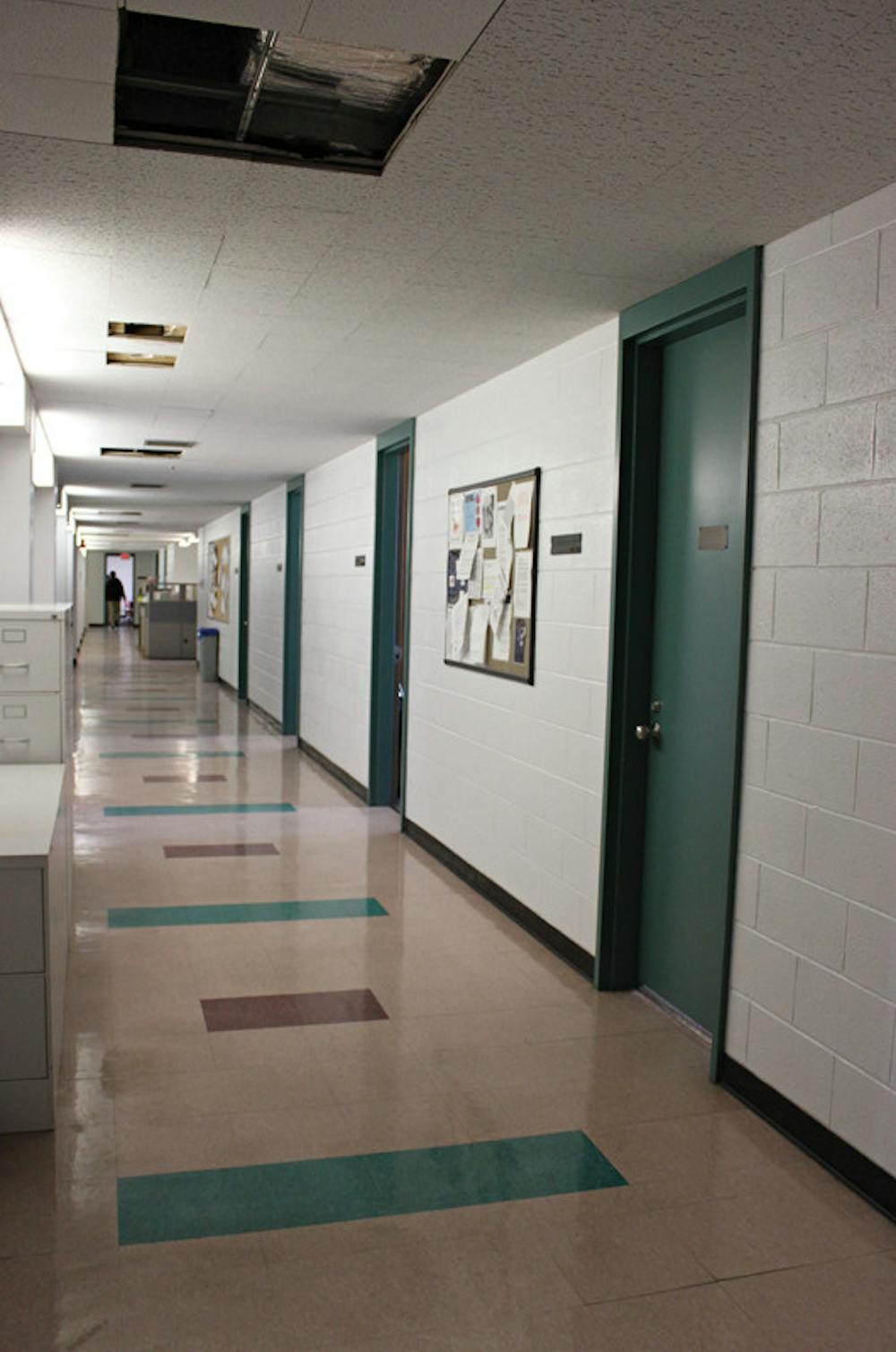Nine Barus and Holley classrooms and laboratories are currently being cleared of asbestos, said Stephen Maiorisi, vice president for Facilities Management.
Asbestos is a naturally occurring mineral fiber that is found in rock and soil, according to the Environmental Protection Agency. The fiber was widely used in manufactured goods and construction materials — such as floor tiles and floor tile glue, insulation and countertops — throughout the 1980s but is now illegal due to its connection to lung cancer.
The University followed a codified process to identify the nine classrooms and laboratories — rooms 225, 446, 744, 747, 749, 738A, 744A, 744B and 730 — that housed materials containing asbestos, Maiorisi said. If the University suspects asbestos may be present, it hires an environmental consultant to survey the material in the room in question, he said. If asbestos is found, the Rhode Island Department of Health must approve an abatement plan.
The state approved the Barus and Holley abatement plan in November 2012, Maiorisi said.
The health risks associated with absestos result from inhalation of the fiber, said Steve Morin, director of environmental health and safety. But students and staff who have been exposed to the areas in question are not at risk, he said.
“Until disturbed, (absestos is) not dangerous at all, so when you do disturb (it), you do it the right way,” he added.
Trained and licensed professionals are brought in to perform negative air containments and air clearances in order to make the area safe. Contracting companies Yankee Fiber Control and Emery Environmental are currently supervising and carrying out the asbestos removal process.
“Negative air containment means nothing can get out of that space that is being filtered,” Maiorisi said. To abate the asbestos, professionals implement a filter like those used in hospitals and respirators to eradicate toxins without sending them into the atmosphere, he said.
There is a common perception that abating is dangerous when people are near the toxic space, Morin said. But negative air containment makes the surrounding atmosphere completely safe, he added.
“You could be standing right outside the vent and it is not harmful,” Maiorisi said.
Buildings constructed in and before the 1980s are suspect, Maiorisi said. He added that he expects to deal with more asbestos removal projects in the future. “The process is so regulated that we have it down to a science,” he said.
Typically, the project manager is responsible for informing the relevant department about an asbestos abatement project, Mairoisi said, adding that the School of Engineering was notified before the current removal project began. The University is also required to post signs around the space, he added.
Lawrence Larson, dean of the School of Engineering, was aware of the ongoing project in Barus and Holley, he wrote in an email to The Herald. Both Maiorisi and Morin said they were not aware of any health or safety concerns from students or faculty members surrounding the project.

ADVERTISEMENT




